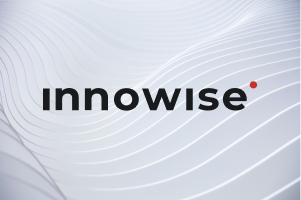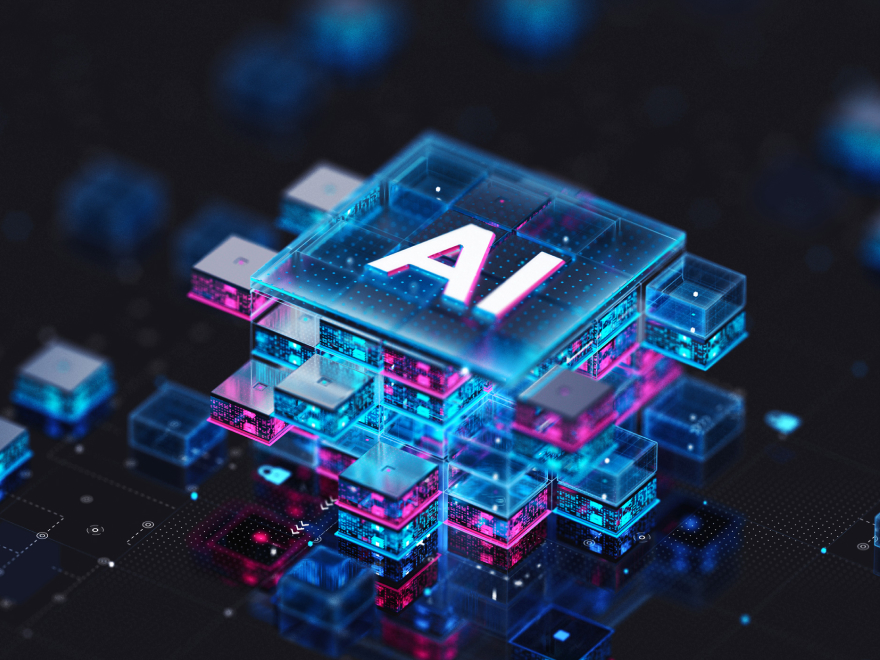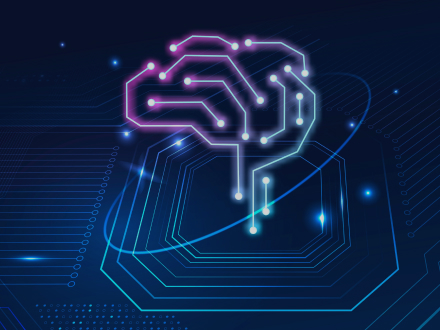Your message has been sent.
We’ll process your request and contact you back as soon as possible.
The form has been successfully submitted.
Please find further information in your mailbox.



A while back, I was working with a logistics client during the rollout phase of an AI-driven operations module. It had just gone live when it flagged a supply chain issue, mapped out a workaround, and rerouted operations before anyone on the team even saw the problem. No one had told it to do that. It just did.
That’s when it clicked. We’re no longer limited to traditional AI. We can build systems that take initiative.
And that changes the game.
Agentic AI systems go beyond automation. They’re unlocking things you couldn’t do before. Detecting blind spots. Taking action. Reaching decisions faster than your competitors, and, more importantly, acting on them while others are still pulling reports.
If you’re running a business, it’s like gaining a new kind of thinking partner — one that doesn’t need rest, doesn’t get tunnel vision, and doesn’t wait for instructions.
If that sounds like a leap, it is. But the companies that make it now? They’ll be the ones others are trying to catch up with in two years.
Let’s talk about how to get there.
Agentic AI is a system design that allows AI-powered software to pursue goals, make decisions, and adapt actions without waiting for human input at every step. Instead of handling isolated tasks like answering prompts or scoring risk, agentic systems combine multiple capabilities (reasoning, planning, memory, and tool use) into something that can act independently toward an outcome.
This design gives businesses something new: AI that can manage complexity in motion. Whether it’s adjusting prices in real time, rerouting shipments during supply disruptions, or triggering compliance checks before risk escalates — agentic AI systems handle what used to need a meeting or a manager.
Business leaders should pay close attention because the gains are measurable. Faster reactions, fewer bottlenecks, and fewer decisions left hanging. Teams get back time to focus on strategy, not troubleshooting. And the organization gains resilience where it counts: across operations, finance, and customer experience.
This is exactly why AI agents are climbing the list of top software development trends. Not only because they automate more, but also because they make better decisions.
We recently worked with a retail company facing constant friction in their supply chain: wrong SKUs sent to the wrong warehouses, delays piling up, and decision-makers overloaded. We built AI agents that monitored stock levels, supplier signals, even local weather patterns. When they spotted a likely disruption, they didn’t raise a flag. They acted. Adjusted routing. Sent alerts where it mattered.
The result? Fewer fire drills. A 22% drop in delays. Happier ops teams.
“We’ve built AI-driven tools that can execute. Now we’re building AI that can intend. And among the clients we’ve worked with, the impact is already reaching balance sheets”

CTO
This kind of capability doesn’t come from off-the-shelf software. It takes proper infrastructure. Real domain data. A partner who knows AI integration means aligning tech with how your business actually works.
At Innowise, we build these systems with a mix of AI development, data science, and machine learning expertise. But more importantly, we design them to think like your business does — only faster, and without fatigue.
Agentic AI vs generative AI vs traditional AI is best understood as a difference in behavior, not in model architecture. Traditional and generative AI systems respond to prompts. They predict, classify, or create. Agentic AI, on the other hand, makes decisions.
Where older AI systems excel at isolated tasks, agentic AI orchestrates actions across tools, systems, and steps, adapting as conditions change.
Now let’s break the difference down clearly.
Decision-making: Traditional AI systems handle predefined decisions. They’re good at scoring, sorting, and classifying, but they always wait for input or rules defined in advance.
Use case style: think fraud detection, churn prediction, or demand forecasting. Traditional AI systems identify patterns and flag results, but someone else decides what happens next.
Strengths:
Limits:
Decision-making: generative AI systems don’t decide, they generate. They create text, images, or code based on probability, but they have no understanding of goals or outcomes.
Use case style: from customer support chatbots to creative tools, generative AI tools respond to prompts. But they won’t follow through unless someone tells them to.
Strengths:
Limits:
Decision-making: agentic AI systems make decisions independently. It’s goal-oriented. AI agents can set subtasks, use tools, and adjust their behavior over time to reach outcomes without needing to be told what to do next.
Use case style: agentic AI systems manage workflows end-to-end, for example, identifying a supply chain risk, planning a workaround, and triggering logistics updates without human prompts at each step.
Strengths:
Limits:
Companies across industries are already seeing real results with agentic AI. Mercedes-Benz integrated its MBUX Virtual Assistant to offer more natural, responsive in-car navigation and support. And global energy provider AES leveraged agentic AI to automate safety audits.
The best way to understand the difference is to look at how each one operates. Let’s break it down by domain:
Finance has always been quick to adopt AI: fraud detection, credit scoring, and risk modeling are all pretty standard by now. Most systems can spot a problem. But spotting isn’t solving.
AI agents change that dynamic. Instead of just flagging an issue, they act quickly to mitigate risks and optimize decisions. For example, in algorithmic trading, AI agents continuously assess market data, automatically executing low-risk trades based on pre-set parameters and real-time shifts in market conditions.
This autonomous decision-making reduces the lag that typically arises from manual interventions, enabling firms to stay ahead of market fluctuations.
Some private banks are using agentic AI to proactively analyze customer portfolios and suggest adjustments, based on both client preferences and external economic signals, often before the client requests them.
For example, JP Morgan uses AI agents for streamlining financial operations. These systems autonomously monitor transactions, detect fraud, and adjust payment processes in real-time, reducing manual oversight and improving response times. By automating key decisions, they’ve boosted efficiency and enhanced fraud prevention.
Retailers have been leaning on AI for years. In physical retail, AI’s already helping optimize everything from shelf planning to staff scheduling. And on the digital side, e-commerce platforms use AI to recommend products, manage customer journeys, and fine-tune marketing.
Now, some retailers are already using AI agents to watch live sales data, competitor pricing, and fulfillment delays all at once. When things shift, the AI adjusts promotions, pauses ineffective ads, or reroutes shipments, without waiting for someone to approve a plan.
Sure, it’s fast. But what makes it powerful is how it connects the dots across marketing, inventory, and logistics. It moves toward a shared goal without turning every small decision into a meeting.
Walmart is a standout case of putting agentic AI to real use. As outlined in their 2025 Retail Rewired Report, the company is deploying AI agents that handle everything from inventory adjustments to supplier negotiations — no human nudge required. These agents track live data, flag disruptions, reorder stock, and even optimize shelf layouts on the fly. That kind of autonomy cut delays and it frees up people to focus on bigger-picture decisions instead of chasing down routine tasks.
Similarly, Amazon’s Nova-Act AI agents are designed to take over day-to-day tasks autonomously, handling everything from scheduling to data processing. This frees up employees to focus on higher-level tasks and boosts overall operational efficiency.
In drug discovery, speed doesn’t just save money, it can save lives. Researchers are dealing with millions of compound combinations, each with their own variables, dependencies, and unknowns. It’s messy, time-consuming work.
AI has already helped speed things up by spotting patterns and narrowing down targets. But agentic AI goes a step further. Instead of just generating insights, it works toward a goal. It can prioritize hypotheses, run simulations, and suggest next steps without needing to be nudged each time.
In early-stage trials, some teams have already seen 30 to 40% faster target identification. Not because they cut corners but because they offloaded the noise. The system handles the endless “what if” loops so researchers can stay focused on the ideas that actually move the science forward.
For example, Novartis has successfully applied AI-driven systems in its drug discovery process. AI agents accelerate the identification of viable drug candidates by analyzing large datasets and predicting outcomes faster.
AI is playing a major role in diagnostics, triage, and hospital operations.
Most healthcare systems are dealing with fragmented data, tight staffing, and a nonstop flow of urgent decisions. Agentic AI is designed to take initiative and carry out tasks end-to-end.
In some hospitals, agents are already scanning patient records across disconnected systems, detecting early signs of deterioration, and automatically bumping critical cases up in scan queues, often hours before a clinician would have intervened.
There’s also growing use in the back office. Agentic systems are handling insurance pre-approvals, reshuffling appointments based on staff availability, and keeping daily operations moving when people simply don’t have the bandwidth.
This isn’t theoretical. These tools are being tested right now, in real environments, under real pressure.
For example, Bayer has leveraged AI to predict flu and cold outbreaks by analyzing data trends, including search data and weather information. This allows them to optimize their outreach and target customers more effectively with timely products.
Faster reactions to market changes, fewer bottlenecks, and the ability to stay ahead of the competition — all without waiting for approval at every step — that’s the real win AI agents bring.
You don’t need more tech. You need fewer delays, fewer “let’s check on that tomorrow” moments, and a system that helps you stop firefighting and get ahead of things. That’s the kind of mess agents are built for.
So, how do you put it to work without turning your whole company upside down?
Everyone has them: approval chains, minor escalations, things that fall through the cracks. An agentic AI system doesn’t pause to check in. It keeps the machine running without needing to stop and ask every five minutes.
If a system breaks, it reroutes. If a deadline slips, it auto-adjusts priorities. That kind of autonomy doesn’t just improve workflows. It makes the entire operation feel lighter.
Most teams sit on piles of valuable data they never use because no one has time to dig through it all. AI agents don’t just read the data. They connect dots, find patterns, and act on what they see.
Imagine a system that flags customer churn before it happens and launches a retention plan while you’re still in your morning meeting. That’s what this looks like in action.
Standard automation is useful… until something weird happens. Then it breaks.
Agentic AI systems handle the edge cases. They understand the goal and adapt when the situation changes. If a step fails or conditions shift, AI agents figure out the next best move instead of throwing an error.
So yeah, it’s still automation but with a pulse.
No one comes up with breakthrough ideas while buried in busywork. When AI agents take care of the repetitive decisions (the status updates, the nudges, the low-risk calls), your team gets bandwidth back. That’s when creativity thrives.
Some of the best product ideas are born out of the silence following the storm. Agentic AI helps create that silence.
Here’s the thing: just because AI can decide doesn’t mean it always should.
Agentic systems are smart. They learn, adapt, and take initiative. But they’re not immune to blind spots. Especially if the data feeding them is messy or skewed. That’s where human oversight becomes essential.
Think of it like this: you’re not handing over the steering wheel. You’re giving the AI system a driver’s license with a supervisor in the passenger seat who steps in when needed.
Some companies get this wrong. They either treat the AI like a fragile intern — overriding every decision — or they hand it too much control, too soon. Neither works. The sweet spot is a clear framework:
It’s not about micromanaging. It’s about trust with guardrails.
And by the way, the best agentic systems improve with good oversight. Every “hey, hold off on that” moment becomes a new lesson. They get sharper, more aligned with your business goals, and more predictable behavior over time.
If you’ve been burned by automation before (bots that broke, models that spiraled), it’s usually because they weren’t built with feedback in mind. AI agents change that. But they still need context. And that’s where your team comes in.
When it comes to adopting agentic AI, business leaders need to understand one thing: it’s not just about having smarter tech. It’s about what that tech does for your bottom line. The potential ROI is real, and the impact on your business can be immediate.
Here’s what you should expect:
Rolling out an agentic AI system doesn’t have to mean a full-scale transformation from day one. In fact, it shouldn’t. The smartest companies don’t rush, they build in layers. Below is a roadmap that actually works in the real world, not just in pitch decks.
Start by mapping where decisions consistently stall. Look for areas where:
These are your best candidates for agentic intervention. If a process is slow, repetitive, and still requires judgment? That’s a sweet spot.
What to do:
Don’t start with data. Start with intent. What are the agents actually responsible for? What outcomes should they influence?
Think in terms of:
Pro tip: write a job description for your AI agents. If it sounds vague, you’re not ready to build.
Treat it like a sandbox. The goal is learning, not perfection.
Start with one micro-decision loop. Something like: “When inventory drops below X and supplier delay is over Y, reroute stock from Z.”
Build that logic, integrate the data sources, and let it run. Then measure:
An agentic AI system needs a technical buildout, but organizational adoption is just as critical.
Don’t dump a black box on your ops team and hope for the best. Include them early. Show them what the agents see. Let them influence the parameters.
The best rollouts we’ve seen feel more like training a new hire than installing software.
Set up a review cycle (weekly or monthly) to analyze the agents’ decisions:
Decide what needs escalation, what doesn’t, and when humans need to step in. This is your guardrail system, and it’s crucial for long-term stability.
Pro tip: document everything. Auditable AI is responsible AI.
When the first pilot shows consistent, trusted results, don’t just copy-paste it across departments. Each function has different variables, goals, and risk tolerance.
Instead:
At this point, you’re evolving your org structure to work with AI.
Let’s skip the futurism. Agentic AI isn’t some sci-fi leap waiting on better hardware or regulation. It’s already in the hands of companies that decided to stop waiting for perfect clarity and start experimenting.
And it’s changing how decisions get made — quietly, but fundamentally.
If you’re in a leadership role, you don’t need to master the tech. But you do need to understand what it means when a system starts setting priorities on its own. You need to decide where the initiative belongs and what happens when it doesn’t come from a human.
That’s the real shift.
Not dashboards. Not chatbots. Agency.
The companies getting ahead? They’re the ones building agents that understand goals, take action, and learn from the outcome. And they’re not throwing it on top of broken workflows, they’re redesigning around it.
No hype, just leverage.
If you’ve got one part of the business that’s always running behind or one decision loop that never quite works, start there. Build a system that doesn’t just respond, but responds with purpose.
And if you don’t know where to begin? We’ll help you figure that out.

Head of Big Data and AI
Philip brings sharp focus to all things data and AI. He’s the one who asks the right questions early, sets a strong technical vision, and makes sure we’re not just building smart systems — we’re building the right ones, for real business value.












Your message has been sent.
We’ll process your request and contact you back as soon as possible.

By signing up you agree to our Privacy Policy, including the use of cookies and transfer of your personal information.